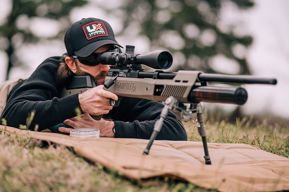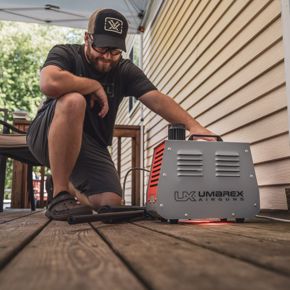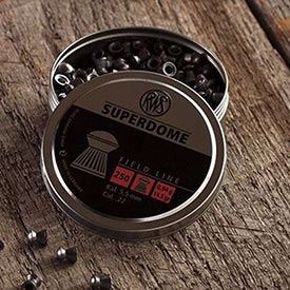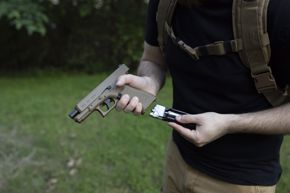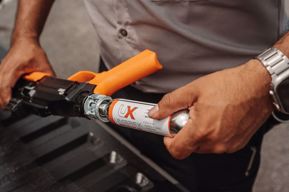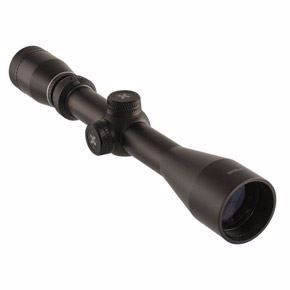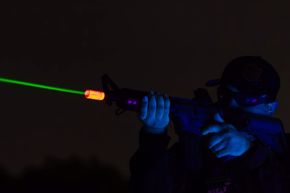Being new to the airgun industry, the boss decided I needed to attend the 2022 Rocky Mountain Airgun Challenge in June.
Frankly, I didn’t know what to expect. While I’m a lifelong hunter and have enjoyed plinking Coke cans in the backyard with an old pellet rifle for decades, competitive airgun shooting was a foreign concept to me - aside from what I have caught on TV at some odd hour of the night during the Olympics. If you’ve never delved into the competitive side of airgun shooting, here’s what it’s like at RMAC.
Competitive Airgunning Is Growing - And Lucrative
With both sportsman (amateur) and pro divisions, the 2022 RMAC drew a few hundred of the top shots in the airgun world. It’s grown each year since Utah Airguns started hosting it.
If you’ve watched “American Airgunner” or gone down the rabbit hole of airgun videos on YouTube, you’d recognize many of the competitors.
With $20,000 checks for the winners in the pro disciplines, it’s easy to see why the best shooters make their way to Provo each year. Veteran airgunners also say a lot of traditional firearm competitors are starting to make their way over into air-powered shooting.
Different Disciplines Keep It Interesting
The 100-yard Benchrest seemed like torture. The 25 scoring targets are 5½ -inches in diameter. The X ring is less than a quarter inch in diameter and, again, they’re shooting from 100 yards. A poof of wind can turn a bullseye when you pull the trigger into a clean miss when the pellet hits the paper. Shooters couldn’t wait very long for the wind to die down either. They had 30 minutes to fire their 25 scoring shots. It seems like plenty of time, but more than one competitor had to rip off five or six rounds in less than two minutes before time ran out.
The Precision Marksman Challenge looked fun. Competitors moved from stage to stage, shooting from a variety of positions (prone, seated, standing) next to and on top of various things like tables, window frames, shopping carts, a fire truck and even an armored personnel carrier. But the targets were at various distances and varied in size as well which really tested the competitors.
The Speed Challenge was the spectators’ favorite event. The head-to-head matchup of airgunners in each round was easy to understand and the targets were large enough to follow along as they raced to hit all of them on their side of the course first. You didn’t need a spotting scope to tell when there was a hit (unlike benchrest and some PMC stages), as the steel targets either moved or rang like a bell each time a pellet struck. Most pairings came down to the last target of the course and there were a lot of “whoas” and “wows” at how close competitors finished to each other. We’re talking hundredths of seconds apart.
The Big Bore Challenge was my personal favorite. Targets were arrayed at distances of 75-300 yards. Two of the steel plate targets were actually placed on the mountainside beyond the normal shooting range. One was so high, competitors had to get down on their knees while resting their rifles on the shooting bench to get the right angle. The targets were so far out there, we actually picked up on the difference between the speed of light and speed of sound as we could see the target move when it was hit a split second before hearing the clang.
Weather Is The Great Equalizer
Shooting a high score in the various disciplines would be difficult in a domed football stadium. Shooting them at the Garth Killpack Shooting Range in Hobble Creek Canyon seemed impossible. Running east-west, the canyon funnels slight breezes into steady and strong winds. Then Mother Nature took a seat at the table by throwing 20 mph wind with gusts to 30 one day. That’s what was being measured in the city at a weather station. In the canyon, it was concentrated into even stronger gusts.
A few times, it even toppled target stands made of 2x4s until RMAC volunteers weighed them down with large rocks. Even then, shooters had to take into account the effect the wind was having on their pellets. More than one of them reported aiming at a target on the left side of their, only to see the pellet hit inside the scoring ring of one six inches to the right. Then when they adjusted their windage for that, the gusts would drop to a slight breeze, leaving them missing to the other side of the intended target. Also, it’s a desert. Drink lots of water. Then drink more.
The Airgun Community Is Incredibly Welcoming
Everybody at RMAC made you feel welcome - whether you were shooting for $20,000 or a complete newbie like me. Strangers were quick to offer a hand to other competitors. Questions whispered at the back of the firing line were gladly answered as everybody there is enthusiastic about the sport of competitive airgun shooting. They want the sport to grow and are doing what they can to make it happen. If you get a chance to shoot a local event, do it.
Team Umarex Learned A Lot
RMAC was a great way to connect and spend time with some of our sponsored competitors - Eydin Hansen, Eric Henderson, Jeremiah Alexander, Todd Bruner and Breanna Garvey.
Eydin and Eric both live in Texas, while Jeremiah lives in Utah - less than half a mile from the shooting range. Breanna, from our office in Fort Smith, was shooting in her first airgun match after years of being a competitive pistol shooter. Todd is one of our sales reps and also lives in the area - so he knew all the best restaurants (get a breakfast burrito from Beto’s if you’re in Provo).
Add in JB (the boss) and myself and we had a big crew at RMAC each day.
While none of our competitors brought home any trophies, they did make a lot of notes for next year. We are already planning for RMAC 2023.
Scott Faldon is the marketing manager for Umarex USA.


